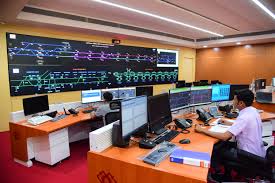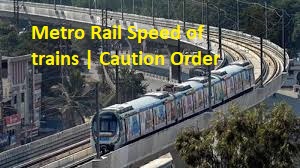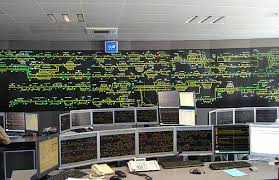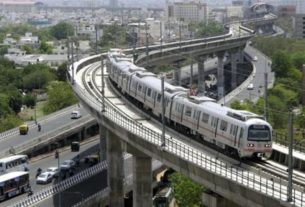Metro Rail Prevention of overcrowding | Emergency Evacuation | Supervision of train movements
Prevention of overcrowding – Metro Rail Prevention of overcrowding Emergency Evacuation
(1) If a service delay or other incident causes a build-up of passengers on a platform, the Station Controller shall decide when that build-up is likely to be unmanageable.
(2) When any situation referred to in sub-rule (1) arises, the Station Controller shall reduce the flow of passenger to the platform by –
(a) making a warning announcement and stopping some or all of the inwards escalators.
(b) switching out some or all of the inward Automatic Fare Collection barriers. and
(c) instructing the ticket sales staff to cease selling tickets.
(3) If despite all measures referred to in sub-rule (2) overcrowding develops in the concourse, passengers shall be advised to leave the station, and the station entrances may need to be closed.
(4) When train services are restored, the restrictive measures may be progressively or completely removed depending upon the level of train services available.
Metro Rail Prevention of overcrowding Emergency Evacuation
(1) The Station Controller shall control the evacuation from the Station Control Room in the event of evacuation of the station becoming necessary as a result of the cessation of train services, risk of fire, or any other emergency –
(a) all automatic fare collection barriers shall be set to open freely in the exit direction and the station staff deployed to assist in passenger evacuation.
(b) information and instruction shall be passed to the public by public address system and where available, visual displays;
(c) all inwards escalators may be stopped and used in the outwards direction, in accordance with special instructions;
(d) all ticket sales shall be suspended and the staff used to assist in passenger evacuation. and
(e) all station exits shall be opened.
(2) The Station staff shall verify that each area of the station has been evacuated and when areas are verified as clear of passengers, the staff shall leave the station and secure it unless otherwise instructed by the Traffic Controller.
(3) If fire or smoke is present, passengers shall, as far as practicable, be instructed to use exit routes that avoid the contaminated areas.
(4) If the fire is in the station, the Traffic Controller shall be informed so that he can instruct Train Operators not to stop the train at the station.
(5) If the fire is at the concourse level, the train may be stopped to allow passengers to board only, as means of evacuating the passenger’s more quickly, and Train Operators shall make announcements in their trains to inform passengers not to alight from the train at the affected station.
(6) If the fire is so extensive that the trains should not approach the station, the Station Controller shall inform the Traffic Controller to instruct the trains coming towards the affected station to stop at the previous stations for evacuating the passengers there and this should prevail till normalcy is restored to the affected station.
Supervision of train movements
(1) When the station control is being exercised from the Operations Control Center, the Station Controller shall observe the passage of trains on the monitor and be alert to take action if the train service is in any way disrupted.
(2) Any failure of any indication on the panel or work station shall be reported immediately to the Traffic Controller.
(3) Control of the panel and workstation may only be taken with the permission of the Traffic Controller and the Operation of individual routes and points shall be carried out as per the Traffic Controller’s instructions.



